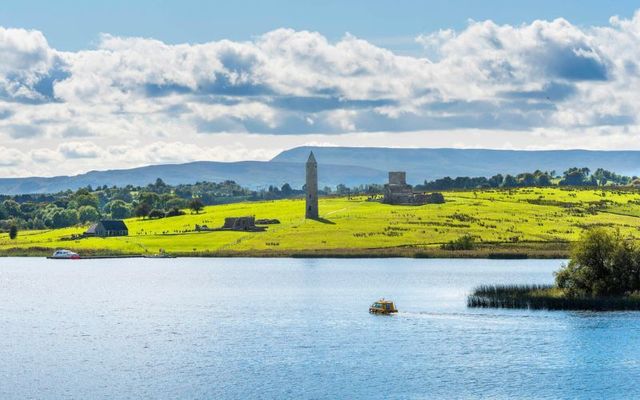Thirty percent of Fermanagh in Northern Ireland is covered with lakes and waterways, and there are some 150 islands to explore here. The landscape has been called a glorious “patchwork quilt” of woodland, forest, parkland and wetland.
Cruise through the twin lakes of Lough Erne, Upper and Lower, which cover one-third of Fermanagh, and spend time visiting the county’s numerous historical landmarks.
According to DiscoverNorthernIreland.com, Fermanagh’s name comes from ‘Firmonach,’ or ‘the men of Monach,’ a Celtic tribe that settled around the shores of the loughs in the early Christian era.
You can find evidence of the area’s Celtic past on Boa Island, in Caldragh Cemetery, home to two Celtic pagan stone idols. One of the stone carvings is a two-headed Janus figure that was the inspiration for Seamus Heaney’s poem ‘January God.’ Another smaller figure, known as “the Lustyman” because it was found on Lusty More, a nearby island, is believed to be of a female figure.
Visitors can take a boat to Devenish Island, home to one of Northern Ireland’s most important monastic sites. The monastic site was founded in the 6th century by Saint Molaise. There are ruins at the site from different time periods including a round tower, bell tower, and several churches.
Fermanagh is also home to three National Trust properties: Castle Coole, Crom Estate, and Florence Court.
The majestic 18th-century Castle Coole, on the edge of Enniskillen, was home to the Earls of Belmore. It features beautifully landscaped gardens that are perfect for a leisurely stroll, and beautifully furnished Regency interiors, including a State Room that was prepared for George IV.
Crom Estate, on the shores of Upper Lough Erne, is one of the National Trust’s most important nature reserves in Northern Ireland, with its historical ruins, islands, woodlands and wildlife.
Florence Court, on the Fermanagh-Cavan border, is an 18th-century Palladian mansion featuring rococo plasterwork and a collection of fine Irish furniture. It is surrounded by lush parkland and woodland.
Read more
Enniskillen Castle, strategically situated beside the River Erne and guarding one of the few passes into Ulster, was built nearly 600 years ago and ruled by Maguire chieftains. The Enniskillen Castle Museum is located within and around the historic castle and its collections feature artifacts reflecting Fermanagh’s history and culture.
Oscar Wilde and Samuel Beckett both attended school in Enniskillen, at the town’s Portora Royal school, which was founded by James I in 1608. The annual Happy Days festival, celebrating Beckett’s works with readings and performances, is held in late summer.
The Marble Arch Caves can be found at the foothills of Cuilcagh Mountains. Here you can explore a network of caverns by taking a boat along the subterranean river beneath limestone stalactites.
*Originally published in 2016. Updated in May 2025.




Comments